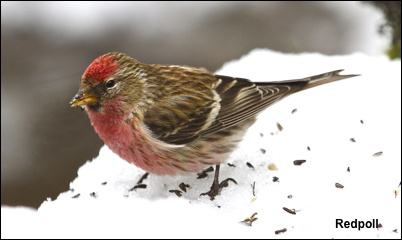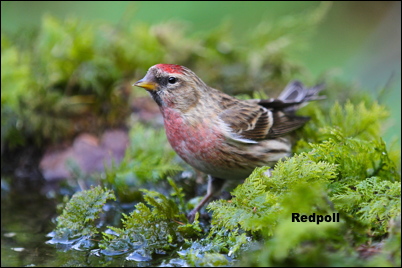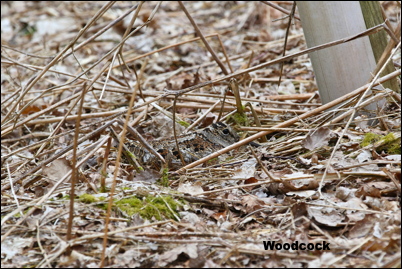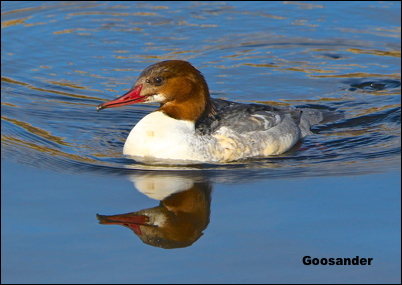April 29, 2016 at 8:39 pm

This morning we had the worst spring blizzard in more than fifty years. Several inches of snow fell, with drifting in the hills, and even at noon the temperature was still below 3°C. It will be a disaster for all the wading birds that breed in the Pennine hills with only the Dunlin not yet incubating eggs.
The bonus in the garden is that all those birds featured in last weeks blog were still present but this time in more arctic conditions. The highlight being a male Redpoll with superb crimson plumage.
The abiding memory of this mornings blizzard was watching two Swallows as they struggled to fly into the driving falling snow – did they survive? click here
April 24, 2016 at 5:23 pm

The cool and sometimes snowy weather of the last few weeks has brought a big influx of birds into the garden. We have had 35 House Sparrows, 36 Goldfinches and new records of 16 Redpolls, 5 Siskins and 6 Reed Buntings. For the first time this winter we have had more than 20 species each day with the best being 21. I have spent some time filming them on Teasel and drinking from a pool. Whilst doing this a Redpoll flew in with a ring on its leg. An unusual visitor was a Lesser Black Backed Gull that took scraps off the garage roof. Click here
On the 22nd April I had the best spring bird locally for some time when a male Whinchat was present. His colours were superb and its a great pity that they no longer breed on our neighbouring moors.
April 18, 2016 at 6:55 pm

The ultimate challenge in springtime is to find a Woodcock incubating eggs. The camouflage when it lays them amongst leaves and bracken is superb as is shown by this weeks sitting female. She laid her eggs on or about the 20th March which is exceptionally early and means she had to sit through two periods of snow! In more than fifty years of searching for Woodcock nests this nest is only the 13th that I have seen – it is the greatest Pennine challenge in springtime and becomes harder each year as the Woodcock has declined by more than fifty percent in the last twenty years.
Since last weeks blog on Goosanders ten were present on our local canal three days ago and this is certainly a local record.
April 10, 2016 at 3:26 pm

During the last fifty years Goosanders have increased in number and are now seen almost daily on our local canal. The female lays up to a dozen eggs in hollow trees and only leaves them to feed twice a day, usually in the company of the male. Her eggs take four weeks to hatch and the first young are normally seen in early May. As this years breeding season is generally a late one you can imagine the surprise of finding a female on a Lancashire river with a dozen young on the 20th March. click here
Most of our summer visitors are now here with Redstart and Pied Flycatcher arriving in Lancashire yesterday(with snow overnight!). Whether we see or hear any Cuckoos remains to be seen.





